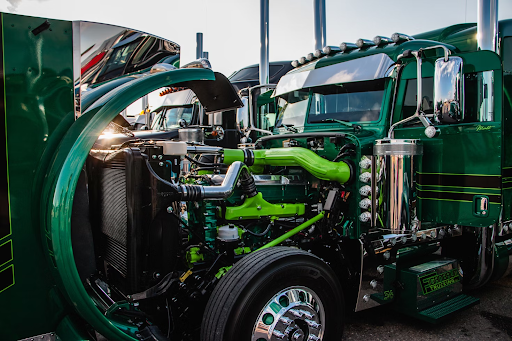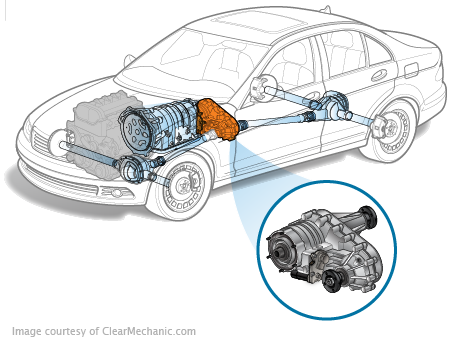
Source: Unplash.com
In transportation and logistics, reducing downtime is the most effective way to boost productivity and ensure the success of your fleet operations.
Frequent downtime not only disrupts schedules but can also result in increased operational costs and strained client relationships.
Although downtime is inevitable as vehicles age and encounter wear and tear, it is possible to minimize it through regular maintenance, timely repairs, and preventive measures such as routine inspections, proactive part replacements, and fleet glass protection.
The Consequences of Neglecting Fleet Glass Maintenance
Fleet maintenance not only reduces operational costs and helps drive profit but also plays a critical role in ensuring the safety of everyone on the road.
Each year, fleet-related accidents, particularly those involving large trucks, result in a significant number of fatalities and injuries. In 2022 alone, 5,936 people died in crashes involving large trucks, which is a 2% increase from the previous year and a 49% increase over the past decade.
Additionally, 120,200 large trucks were involved in crashes that resulted in injuries, a 2.5% increase from 2021. Most of these fatalities (70%) and injuries (73%) were occupants of other vehicles involved in the crashes.
Driving with damaged auto glass is one factor that causes these accidents. After all, a damaged windshield can significantly affect driver visibility. Addressing windshield damage before it worsens can significantly reduce the risk of accidents.
Essential Tips for Fleet Glass Protection
Fleet glass typically covers everything from windshields, side windows, and rear windows to less obvious areas like rearview mirrors and vent windows, all of which contribute to the truck’s overall safety and functionality.
Here are some helpful tips on how to effectively maintain your truck’s auto glass to minimize downtime and increase your fleet operation’s efficiency.
Tip 1: Routine Maintenance Checks
Regularly checking and maintaining your fleet once every month is key to maximizing operational efficiency and keeping your trucks in optimal condition. This includes looking for any chips or cracks on your fleet’s auto glass and addressing them promptly to avoid further damage and potential safety hazards.
To efficiently find cracks or chips, remove any dirt or debris that may be masking small imperfections. Then, using natural light or a bright LED lamp, carefully examine the glass from different angles. Focus on areas where the glass is more prone to damage, like the lower corners of the windshield.
Use your fingers and run your hand along the edges to detect cracks that are hard to see. Make sure to check from both the inside and outside of the truck as well.
Tip 2: Immediate Repairs
If you find any cracks or chips on your truck’s windshield, it’s crucial to address the damage promptly. Neglecting a damaged windshield not only increases the risk of the crack spreading further but can also weaken the structural integrity of the truck.
Getting your truck’s windshield repaired by a trusted auto glass service is the best way to ensure the repair is done correctly and safely. Auto glass professionals have the specialized skills and experience to handle any type of damage, ensuring a durable and precise repair. They can also evaluate the severity of the damage and provide expert advice on whether a vehicle glass replacement is necessary.
Tip 3: Use of Protective Films
A protective film is a thin, transparent material made from a durable polymer that is usually applied to the surface of auto glass such as windshields, side windows, and rear windows.
These films are designed to absorb impacts and resist shattering, which can be crucial when driving in areas with a lot of road debris. There are several types of films available, including clear versions that are nearly invisible once applied and tinted films that can help with glare and UV exposure.
Choosing the right protective film can help maintain the integrity of your fleet’s glass, ensuring that your vehicles stay on the road longer without the need for frequent repairs.
Tip 4: Make Sure Your Windshield is Ready for Any Weather
Your windshield is your first line of defence against the elements, which is why it’s crucial to keep your fleet’s auto glass in peak condition so that it can handle any weather. To protect your fleet’s windshield better from the elements, consider doing the following:
- Replace worn-out wiper blades.
- Use high-quality washer fluid.
- Consider applying a protective film that repels water, snow, and ice, especially during the winter.
- Be cautious with temperature changes. Don’t turn on the air conditioning right away in hot weather—it can strain the windshield and make cracks worse. In cold weather, warm up the car slowly to prevent the glass from cracking.
Tip 5: Educate Your Drivers
Finally, don’t forget to reinforce the importance of windshield care with your drivers. Offering training on how to spot early signs of damage and what to do when they find it ensures that small issues don’t turn into costly repairs or safety risks.
Simple actions like reporting minor chips or understanding the dangers of driving with damaged glass can go a long way in maintaining fleet safety.
Key Takeaways
The importance of windshield maintenance in fleet management cannot be overstated. Following the tips stated above can significantly reduce the risk of costly repairs, minimize downtime, and enhance the overall safety of your fleet. Ultimately, investing in windshield care is an investment in the overall success and safety of your fleet.





More Stories
These 4 Defective Truck Parts Can Lead to Disasters
How to Create Compelling Ads That Effectively Promote Your Car Dealership Business
How Students Can Tackle Common Car Issues on Their Own